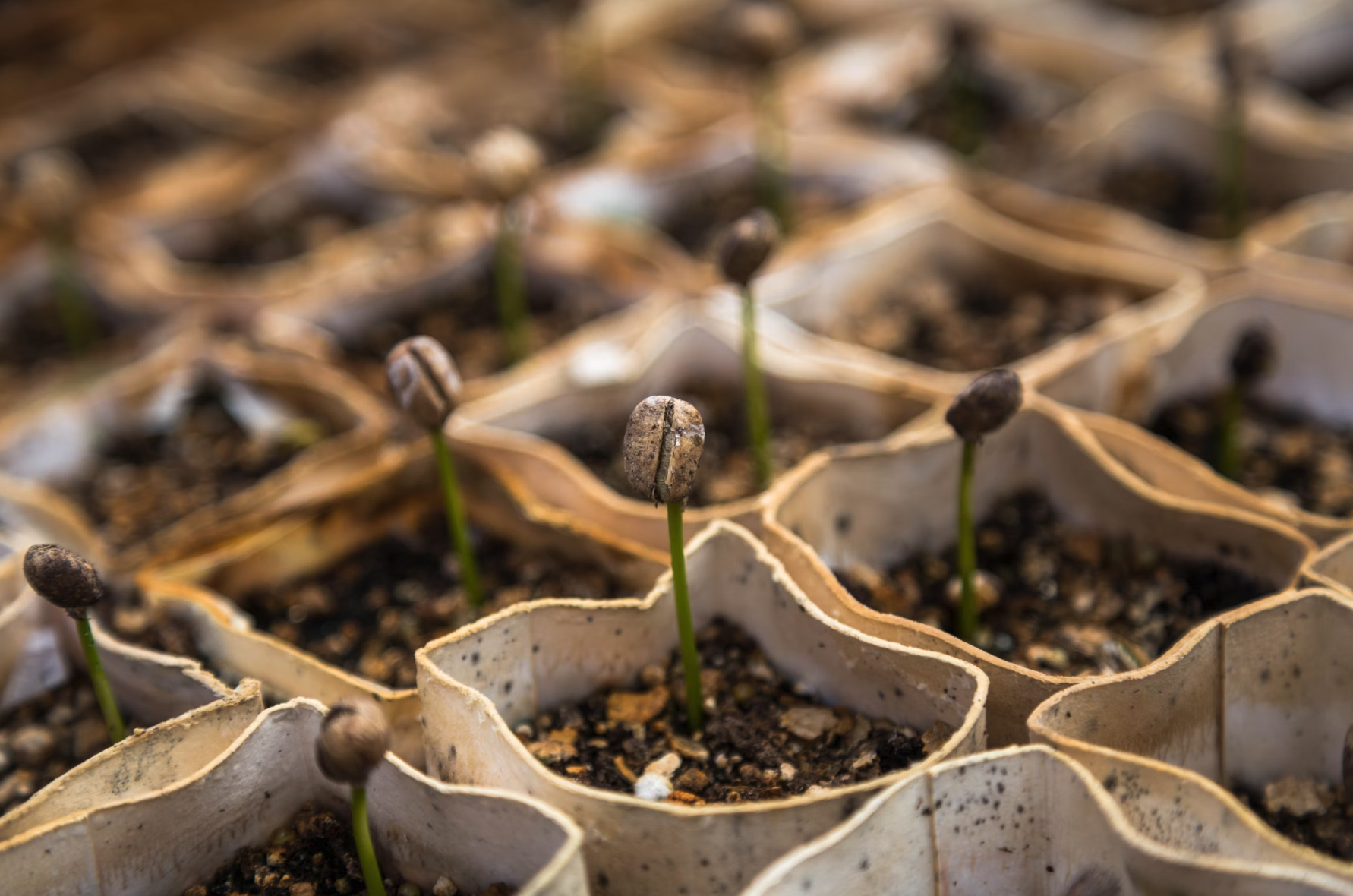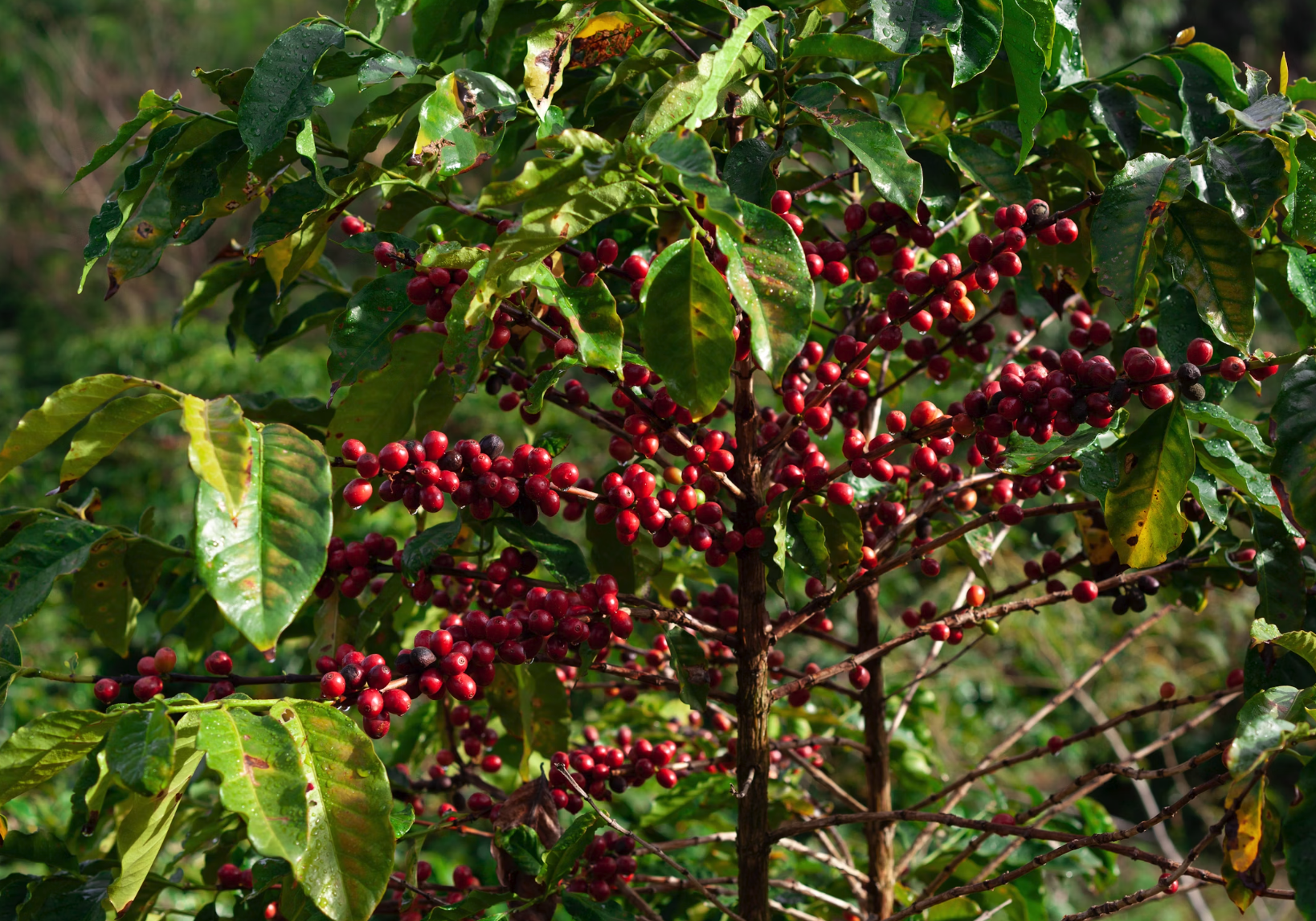The Coffee Plant From Seedling to Sip
You might know coffee as your morning pick-me-up, but before it fills your mug, it begins as a vibrant evergreen shrub tucked away in tropical mountains. The journey of the coffee plant is long, beautiful, and full of fascinating science, tradition, and care.
Origins & History
Coffee’s story begins in Ethiopia, where legend tells of a goat herder named Kaldi who noticed his goats dancing after eating red berries from a certain tree. These berries were the seeds of the Coffea plant. From there, coffee cultivation and trade spread to Yemen, where it became a beloved part of Islamic culture and ritual. It journeyed through the Arabian Peninsula, into Europe, and eventually across the world—gaining major cultural and economic importance along the way.
Today, two main species dominate global production: Coffea arabica (Arabica) and Coffea canephora (Robusta). Arabica is known for its smooth flavor and grows best at higher altitudes, while Robusta is more bitter and hearty, thriving in lower altitudes and hotter climates.
Growing Conditions
Coffee plants thrive in the “coffee belt” which is a stretch of land around the equator with consistent temperatures, rainfall, and shade. These shrubs prefer rich, well-draining soil, high humidity, and dappled sunlight, often growing under the canopy of larger trees in biodiverse environments.
It takes about 3–4 years after planting for a coffee shrub to bear fruit. The plant blooms with small, fragrant white flowers, which eventually give way to green cherries. These cherries ripen into a deep red or yellow, depending on the variety.
Harvest & Processing
Once the coffee cherries are ripe, they’re hand-picked (especially in high-quality production), then processed to extract the beans. This can be done through:
Dry Processing: Cherries are dried whole in the sun before the outer layers are removed.
Wet Processing: The outer pulp is removed immediately, and beans are fermented and washed before drying.
Once dried, the beans are hulled, sorted, and graded. Then comes roasting which is the transformative step that turns green beans into the aromatic, flavorful coffee we know and love.
Fun Facts About the Coffee Plant
A single coffee plant can produce roughly 1–1.5 pounds of roasted coffee per year.
The fruit is technically a cherry, and each cherry usually contains two beans.
Coffee plants can live up to 100 years, though peak production occurs between ages 7–20.
Bees love coffee blossoms, and caffeine in the nectar may help enhance their memory which is in turn supporting pollination!
Shade-grown coffee not only improves bean quality but also supports bird and insect biodiversity.
Final Sips
Understanding where your coffee comes from makes that daily brew feel a little more magical. The coffee plant is more than just a source of caffeine… it’s a global connector, a biodiversity contributor, and a living symbol of resilience and care.
Whether you’re a grower, roaster, or simply a sipper, every cup begins with this slow, steady journey from seedling to sip.
From our Cup to Yours
- Zoé & The Greenhaus Team

